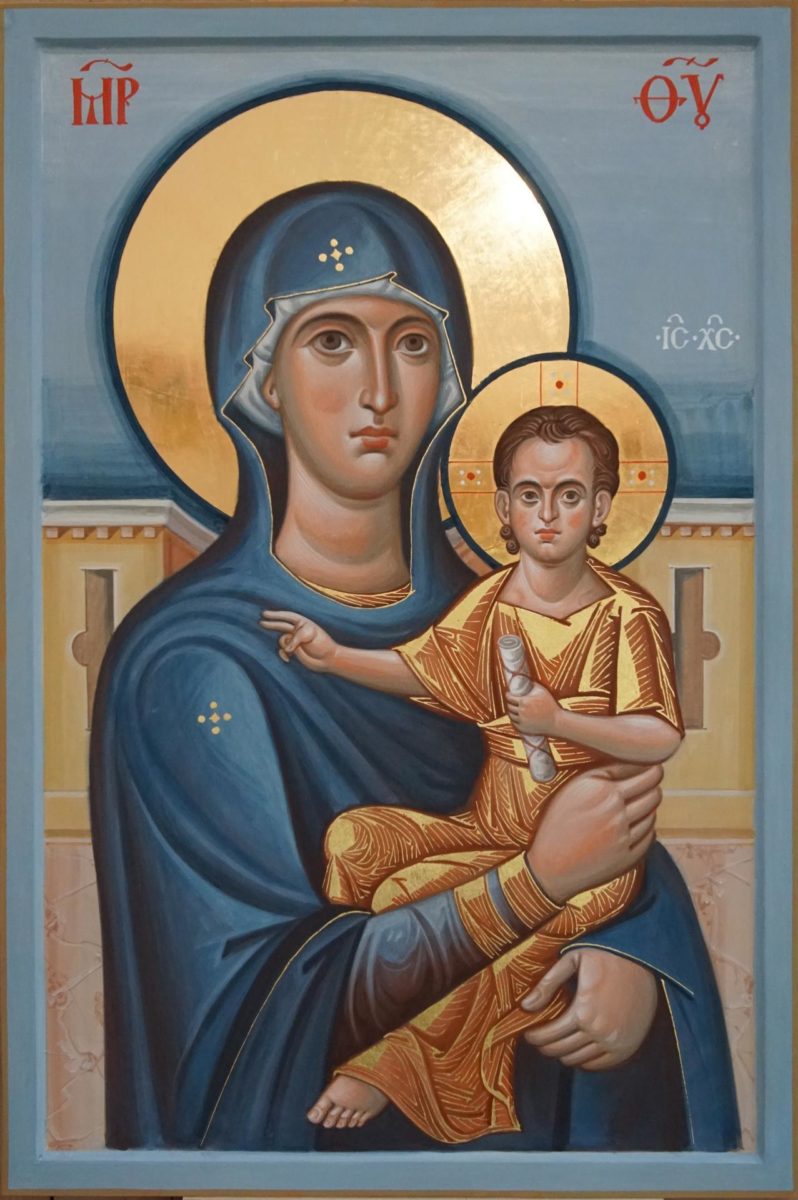

- #FEMALE ICONOGRAPHER IN MALE ORTHODOX MONASTERY FULL#
- #FEMALE ICONOGRAPHER IN MALE ORTHODOX MONASTERY CODE#
Many people will begin painting icons, and there will be a need for teachers.

"Study iconography," he told her, "because twenty years from now there will be a tremendous interest in this art. The Pokrovskys became a part of his parish in Novaya Derevnya, a short distance from Moscow.Men encouraged Ksenia's interest in iconography, giving her his blessing. Men performed the marriage ceremony of Lev and Ksenia he became a close friend and frequent visitor in their home.
His understanding of world religions, charismatic personality and erudition attracted many converts, especially from intellectual and artistic circles, but also made him the target of KGB harassment. Men’s connections with the Catacomb Church, which refused to cooperate with the Soviet authorities, meant that he was constantly under suspicion. Pokrovsky’s need to find a priest with whom she could discuss her doubts about a scientific career led her to Father Alexander Men, often referred to as the "Apostle to the Intellectuals”. Those who dared to attend the services of the Church were under constant scrutiny by the authorities as being "enemies of the people" or otherwise "undesirables". Many places of worship were closed, transformed into museums of atheism, or other-use facilities (bars, theaters, warehouses, garages) in very many cases, they were utterly destroyed.
#FEMALE ICONOGRAPHER IN MALE ORTHODOX MONASTERY FULL#
The Roman Empire, infamous for persecuting Christians, was in no sense an atheist state but Soviet Communism was committed to full elimination of all religious belief. From 1917 onward, Christians faced a peril for which there was no precedent in earlier Christian history. This was a difficult time for the Russian Church. Having no possibility of learning through systematic education or under the tutelage of a master, Pokrovsky was almost entirely self-taught. Ksenia Pokrovsky began her career as an icon painter in 1969 – a time when icon painting was still banned in the Soviet Union, and when the few individuals who were secretly practicing the ancient art were under constant threat of persecution. Any successful discoveries would contribute to the larger mission of the Soviet Union, the same political system that imprisoned her grandfather. A career would leave little freedom for her deeper spiritual questions and her desire to raise a family. dissertation that Pokrovsky realized that she did not want to devote her life to being a laboratory researcher. Lev became a teaching professor and researcher of theoretical physics. They married in 1960 and lived together for 53 years. It was at Moscow State University that Ksenia met fellow student Lev Alexeyevich Pokrovsky. After reading an article on the discovery of the DNA spiral, her Bulgarian grandmother Nevenka remarked, “Look, Ksenia, these are the tablets of the covenant" (meaning the commandments given to Moses, written by God Himself). In the 1960s Pokrovsky was a promising biophysics student at Moscow State University, but her interest in science was always an inseparable part of her larger metaphysical quest. By postponing her baptism, she protected her parents against charges that might be brought against them for failing to shield their child from " obsolete religious views". Pokrovsky was baptized at the age of 24, after she was a legal adult under Soviet law. Pokrovsky’s paternal great aunt, the artist Yekaterina Mikhaylovna Belyakova (1892-1980), was her model for creativity and also her mentor in the Orthodox Christian faith. Pokrovsky was raised by an atheistic mother whom she described as a “romantic communist”, but she was deeply influenced by the Orthodox Christian faith of her grandmothers.

He was confined to a prison specifically built on the site of his laboratory, where he died. Sentenced to many years of compulsory labor, his research was still considered vital to Soviet interests. Although a member of the USSR Academy of Sciences, he fell prey to Stalin’s purges and was arrested on false charges in 1929 (posthumously rehabilitated in 1956). A distinguished State University professor in the 1920s, he was the author of important research in the field of catalysis and physical-electrochemistry. Pokrovsky’s ancestry includes Russian, Bulgarian, Jewish and Polish grandparents, as well as an 18th-century Tartar progenitor. Pokrovsky died July 7, 2013, in Boston, Massachusetts, USA. Pokrovsky's expectant mother Tatyana (Shpitalskaya) Belyakova was among those temporarily relocated to Osh.
#FEMALE ICONOGRAPHER IN MALE ORTHODOX MONASTERY CODE#
Known by the code name Operation Barbarossa and launched in June 1941, the Nazi land invasion of the Soviet Union was the largest in the history of warfare. During World War II many Muscovites were evacuated to various locations in Central Asia as the Nazi army advanced to within 100 miles of Moscow. Ksenia Mikhailovna Pokrovsky was born Main Osh, Kyrgyzstan ( Ferghana, Central Asia).


 0 kommentar(er)
0 kommentar(er)
